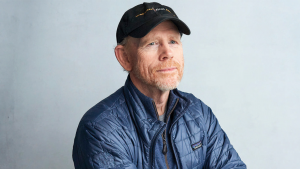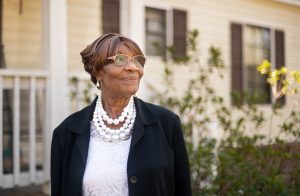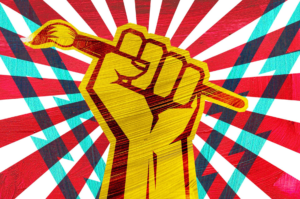Documentation Center of Cambodia in collaboration with the Kokor commune of Kampong Siem district in Kampong Cham province built a stupa to commemorate the victims of the Khmer Rouge regime (1975-1979). The stupa is located in the middle of a rice field in Chamkar Samseb village in the commune and was constructed upon a request by Tong Sophea, 55, a survivor of the Khmer Rouge regime and an orphan, whose father was captured and killed at the Kokor Security Office in 1978. We share some interesting stories of events that happened in Kokor commune during the Khmer Rouge regime.
The Kokor commune, located along the Mekong River and about 15 km from Kampong Cham provincial town, has four villages. The Kokor security office was established there in 1975. The mass killings started there following the arrival of the Khmer Rouge cadres from the Southwest Zone.
In Kokor commune, the people were executed in three killing sites: the rice field in Chamkar Samseb village, tobacco kiln, and Kokor security office inside the Kokor pagoda’s compound.
The villagers were killed in the rice field, while the local Khmer Rouge cadres in the Eastern Zone and those involved were detained and killed at the Kokor security office. In the meantime, many Cham people living in Kampong Krabei village were targeted and taken to be killed inside the tobacco kilns right behind the villagers’ house in Chamkar Samseb village. Hundreds of victims were killed at the time. In mid-1978, the Kokor security office was transformed and used as a warehouse for storing rice and agricultural materials.
Stupa gives the space to talk about the history of the Khmer Rouge and to commemorate the collective memory and genocide prevention

Lon Leang Heng, 66, a survivor and a commune chief of Kokor, firstly thanked the Documentation Center of Cambodia for building the stupa to commemorate the victims who lost their lives during the Khmer Rouge regime in his community.
“This stupa stands as a symbol, giving me and Kokor residents who went through the Khmer Rouge regime an opportunity to remember the past,” said Leang Heng.
He added: “Not only does the stupa serve as a place to educate the students but also testify the history of the Khmer Rouge. The students come to discuss and understand what happened in their community during the regime. The
Tong Sophea, 55, a base child and a survivor, recalls the final moment he slept on his father’s arm on the night he was taken away to kill at the Kokor security office and proposed the stupa to be constructed in his rice field

Tong Sophea was born on April 10, 1966, in Chamkar Samseb village, Kokor commune, Kampong Siem district, Kampong Cham province. His father was Tong Von and his mother was Pach Sai Eng. Sophea is the third child amongst four siblings. During a battle between Lon Nol soldiers and the Khmer Rouge forces in early 1970, Sophea was about five years old. At that time, his parents carried him and other children to flee from Chamkar Samseb village, which was a battlefield. In 1971, his family returned to the village and lived there until 1975. Later, his parents and two sisters were sent to work in their mobile unit. At that time, Sophea was nine and was sent to the children’s unit to study and collect cow dung to be used as fertiliser to put in the rice field. The children’s unit consisted of about 30 boys and girls with comrade Lim serving as the unit chief. Comrade [Neary] Chheang was a first grade teacher in Chamkar Samseb village. Sophea and the other base children had to get up very early and go to study with comrade Chheang under [Ta] Sear’s house.

In the morning, comrade Chheang taught the students about basic Khmer literature and math for about three hours. Afterward, comrade Chheang led all base children to work by collecting cow dung from one house to another to produce the rice fertiliser. Until 12 at noon, comrade Chheang and base children went to eat at the eating hall. After a short lunch break, the base children, led by Chheang, continued to collect cow dung until 5pm. In 1976, Sophea was transferred to the second mobile unit to work in the rice field for a while. In 1977, Sophea was sent to the rice fields for about two months. Sophea was 11 at the time. Later, he was allowed to return home. From 1977 to 1978, Khmer Rouge cadres from the Southwest Zone took control over the village and began arresting and killing many villagers at the Kokor security office. His father, Von, was also captured and killed. On a late night in 1978, four Khmer Rouge soldiers came to call his father while he was sleeping on his arm. That was the last time he saw him going down from the house and was escorted by the Khmer Rouge soldier along with other arrested villagers to the Kokor security office. Since then, Sophea has never seen him again. The last moment the Khmer Rouge soldiers took his father away is still in Sophea’s memory. Sophea takes this opportunity to dedicate to the memory of his father, Tong Von, and commemorate the victims who lost their lives during the Khmer Rouge regime at the stupa.
Seang Chenda is the Director of the Kampong Cham Documentation Center




